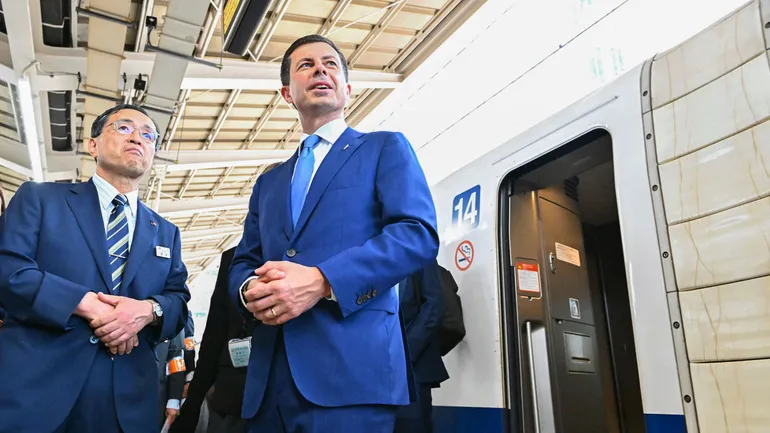“People may doubt what you say, but they will believe what you do.”
― Lewis Cass
THE ART OF LEADERSHIP
People May Doubt What You Say, But They Will Believe What You Do
A Deep Dive into Lewis Cass's Wisdom on Authentic Leadership Through Actions
"People may doubt what you say, but they will believe what you do." This profound insight from Lewis Cass resonates deeply in today's leadership landscape. In an era where trust is paramount, leaders must recognize that their actions are the true testament to their integrity.
Words can inspire, but without corresponding actions, they ring hollow. Consider leaders who promise change but fail to implement it; their credibility diminishes. Conversely, those who lead by example and follow through on commitments earn trust and respect.
Actions demonstrate commitment. When leaders actively participate, they bridge the gap between rhetoric and reality. This alignment fosters a culture of authenticity within organizations.
Consistent actions build trust. Teams are more likely to engage when they believe in their leader's integrity. It's not enough to articulate values; embodying them is crucial.
Reflecting on this quote invites leaders to assess if their actions align with their words. Are we modeling desired behaviors? Are we turning promises into outcomes?
Embracing Lewis Cass's wisdom opens the door to authentic leadership. Let us commit to actions that reinforce our words, building trust and inspiring those we lead. After all, it's through what we do that our true leadership is revealed.
COMMERCIAL CONSTRUCTION
Are Oregonians Ignoring the Call Before They Dig?
Did you know that every six minutes in the U.S., an underground utility line is damaged due to someone digging without first calling 811? In Oregon, despite the availability of the free Oregon 811 service, many residents are still taking risks by not making that crucial call before starting their digging projects.
Recent reports indicate a surprising number of incidents where gas lines, water pipes, and communication cables have been accidentally damaged, leading to costly repairs and even dangerous situations. The question arises: why are Oregonians neglecting this simple, preventive measure?
Some speculate that lack of awareness is the primary issue. Others believe it's the assumption that small projects don't require such precautions. However, whether you're planting a tree or installing a mailbox, underground utilities can be just inches below the surface.
Oregon 811 is more than just a hotline; it's a vital resource that ensures the safety of individuals and communities. By contacting them, utility companies can mark underground lines, preventing accidents and service disruptions.
So, are we doing enough to spread the word about Oregon 811? What can be done to encourage more people to make that call? It's time for a community conversation about the importance of safety and the simple steps we can take to protect ourselves and our neighbors.
Next time you plan a digging project, large or small, remember that one call can make all the difference. Let's make Oregon safer together.
Have you ever called Oregon 811 before a digging project? With so many ignoring it, what's stopping people from making this simple, life-saving call?
#DigSafe #Oregon811 #CallBeforeYouDig
— #The Dig Daily Dose (#@TheDigDailyDose)
12:44 PM • Nov 8, 2024
INFRASTRUCTURE INDUSTRY
Money vs. Momentum
Will Growing Bipartisan Support Finally Push U.S. High-Speed Rail from Dream to Reality?
The dream of a national high-speed rail network in the United States, long plagued by political hurdles and astronomical costs, might finally be inching closer to reality. While new political support is emerging across both major parties, financial barriers remain daunting. A recent report by infrastructure consulting firm AECOM highlights the immense complexity and cost of high-speed rail projects, particularly in a landscape rife with land acquisition disputes and rising material costs. But with federal support becoming more favorable, advocates hope the U.S. may be on the brink of a high-speed rail renaissance.
Transportation Secretary Pete Buttigieg, a vocal supporter of high-speed rail, noted that President Biden’s infrastructure package has begun to move the needle, yet significant long-term funding is still necessary. Even though the 2021 bipartisan infrastructure law provided $66 billion for rail projects, advocates worry these funds are spread too thin. Leaders like Alstom’s Dani Simons emphasize the need for a renewed transportation bill to secure ongoing support for transformative projects.
Meanwhile, projects like Brightline West between Las Vegas and Southern California and Texas Central connecting Dallas to Houston are gaining traction and bipartisan interest. However, the case of California’s high-speed rail serves as a cautionary tale. Initial delays and ballooning budgets have led to political criticism, particularly among Republicans, but this hasn’t stopped bipartisan support for high-speed rail elsewhere. According to a recent Newsweek poll, 60% of Americans support high-speed rail, with little variation in support between Biden and Trump voters.
Proponents argue the benefits extend beyond convenient travel: high-speed rail would create thousands of jobs, reduce carbon emissions, and ease congestion on highways and in airports. Andy Kunz, CEO of the U.S. High-Speed Rail Association, calls for a cohesive, nationwide system that could redefine American transportation and help combat climate change.
For now, advocates are watching the progress of initial high-speed projects with hope. Success here could be the tipping point for more projects nationwide. As AFL-CIO Transportation Trades Department President Greg Regan noted, "The biggest game-changer for high-speed rail in this country is going to be when that first train runs."
With bipartisan momentum building, do you think high-speed rail in the U.S. could become a reality soon? What challenges or benefits do you foresee if it does?
#HighSpeedRail #BipartisanSupport #FutureOfTransit
— #The Dig Daily Dose (#@TheDigDailyDose)
12:42 PM • Nov 8, 2024
RESIDENTIAL RESEARCH
Is Florida the Blueprint for America’s Political Future?
Education, Real Estate, and the Anti-Woke Movement Shape a ‘New Frontier’"
In the turbulent landscape of the 2024 US Presidential election, Florida’s politics reveal a powerful shift that could shape America’s future. The state is pioneering a political and economic model centered on real estate, private education, and a strong stance against “woke” ideology, giving rise to conversations about Florida’s direction under Governor Ron DeSantis and its impact on national policy.
One of the state’s most significant battlegrounds is education. Under the leadership of figures like Christopher Rufo, tasked by DeSantis with remaking Florida’s higher education, schools have become ideological arenas. Rufo, known for his role in developing Trump’s 1776 Commission and vocal opposition to critical race theory, has led efforts to reform the New College of Florida and eradicate elements seen as “woke,” including diversity and equity programs. This effort, part of a broader “anti-woke” agenda, has made Florida a testing ground for reshaping public education to fit a new ideological mold one that consolidates private economic power and challenges traditional academic norms.
Real estate and finance form another pillar of Florida’s unique model. As the fastest-growing state in 2022, with Miami emerging as a top financial hub, Florida has attracted significant investment. Capital flows from cities like New York and San Francisco, reshaping the state’s economy. However, as investment grows, so does inequality; the state’s top 1% captured nearly 78% of income growth between 2009 and 2015. Wealth concentration is a signature of Florida’s economy, sparking concerns that its policies favor investors over working Floridians. Furthermore, the FIRE sector finance, insurance, and real estate dominates, constituting 25% of the state’s GDP compared to the national average of 20%. This growth highlights the state’s focus on attracting capital while limiting taxes, a boon for wealthy investors but challenging for many residents.
Florida faces additional challenges in healthcare. Despite leading in Medicare expenditures per capita, its healthcare system is notorious for costly, sometimes questionable practices. Federal and state dollars flow to private healthcare providers, bolstering an industry often criticized for prioritizing profit over public welfare. This dependence on federal support and minimal state oversight fuels debates over the balance between public health and private gain.
At its core, Florida’s “model” suggests a political and economic blueprint where state powers favor private over public interests, shifting responsibilities from government to individual wealth. Supporters argue this enables freedom from regulatory constraints, while critics warn of deepening inequality, weakened public education, and an insulated elite.
As Florida continues to assert its political and economic ideology, its model raises questions: Is this the future for other states? Can public interests thrive in an economy driven by private capital and education reform? Florida’s experiment is reshaping the nation’s political landscape, sparking a conversation about the country’s values, priorities, and the direction of American governance.
Is Florida’s focus on private capital and ‘anti-woke’ policies a sustainable model for other states, or does it risk deepening divides?
#FloridaModel #PoliticalFuture #NationalImpact
— #The Dig Daily Dose (#@TheDigDailyDose)
12:30 PM • Nov 8, 2024
TOOLBOX TALK
The Importance of Hazardous Material Handling on Construction Sites
Introduction
Good morning, Team! Today, we’re discussing a critical safety topic: handling hazardous materials. On construction sites, we often work with materials like chemicals, solvents, paints, and fuels. Mishandling these substances can lead to serious injuries, including burns, respiratory issues, and even explosions. Understanding how to properly handle, store, and dispose of hazardous materials is essential for keeping ourselves and our coworkers safe.
Preventing Incidents: The Role of Hazardous Material Handling
Accidents involving hazardous materials often occur because of improper handling, lack of PPE, or failure to follow safety guidelines. By following best practices and being cautious with hazardous substances, we can prevent spills, burns, and other serious injuries.
Strategies for Safe Hazardous Material Handling
Read Safety Data Sheets (SDS): Each hazardous material has a Safety Data Sheet that provides information on safe handling, potential risks, and first-aid measures. Always read the SDS for any unfamiliar substances and follow the guidance it provides.
Wear Appropriate PPE: Use the correct personal protective equipment (PPE) for each material. This might include gloves, goggles, respirators, or protective clothing. PPE acts as a barrier between you and hazardous materials, reducing the risk of exposure.
Store Materials Properly: Always store hazardous materials in labeled, approved containers and in well-ventilated areas. Keep incompatible substances apart, such as acids and bases, to avoid dangerous chemical reactions.
Use Proper Disposal Methods: Follow proper disposal procedures for each hazardous material to avoid environmental contamination and accidental exposure. Never pour chemicals down drains or dispose of them in regular trash.
Have a Spill Response Plan: Be prepared for potential spills by knowing the location of spill kits and understanding how to use them. Respond to spills immediately to prevent the spread of hazardous substances and minimize exposure.
Discussion Questions
Have you encountered any hazardous material incidents on-site? How was it handled, and what could have been improved?
What PPE do you find most useful when handling hazardous materials?
How can we improve our practices to ensure the safe handling and storage of hazardous materials?
Conclusion
Handling hazardous materials requires caution, knowledge, and adherence to safety protocols. By reading SDS information, wearing the right PPE, storing materials correctly, following disposal guidelines, and having a spill response plan, we can protect ourselves and our coworkers from hazardous material-related accidents. Let’s all commit to these safety practices and ensure a safe and compliant work environment.
Handle with care, stay safe!








